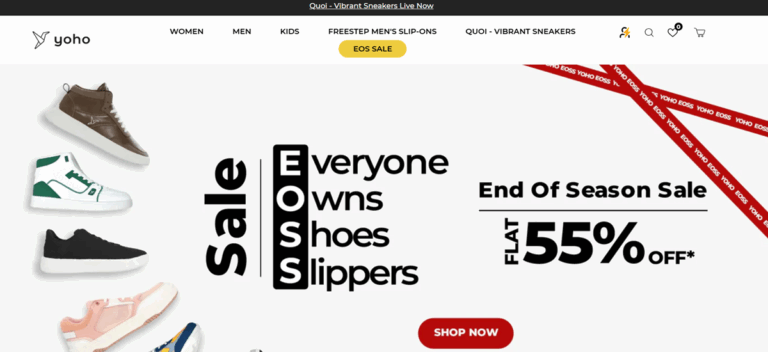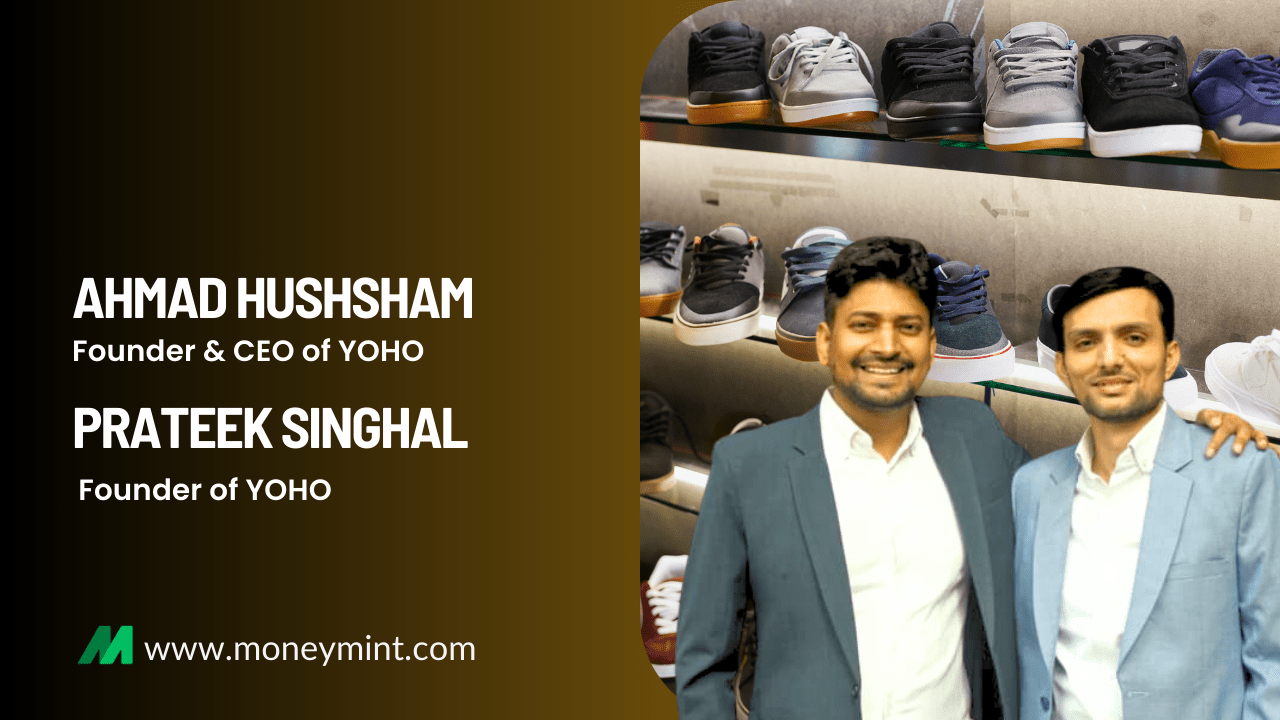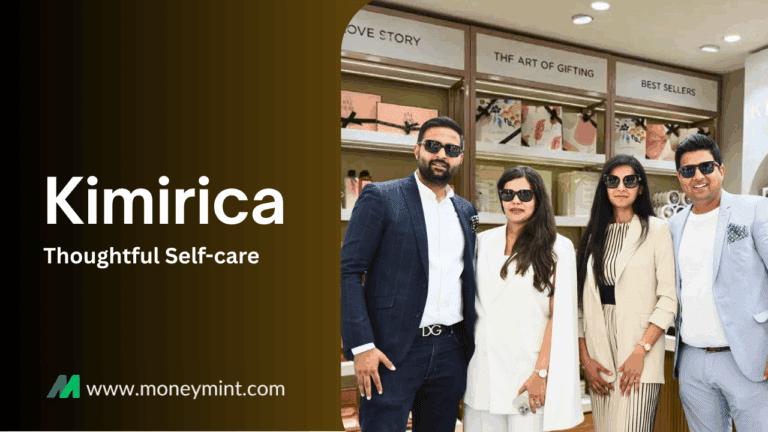The footwear industry is evolving as now many consumers favor trendy, all-weather performance brands for activities like jogging and hiking, and let us not forget stylish dress shoes promoted by celebrities. This has created a divide in the market; aspirational buyers are seeking premium products while others are stuck with low-cost, uncomfortable footwear.
This is where Yoho comes into the picture as it successfully filled the gap in the traditional footwear market as a comfort-first, budget-friendly direct-to-consumer brand. It specializes in functional shoes ideal for everyday wear.
Founded by seasoned professionals Ahmad Hushsham and Prateek Singhal, this startup ensures to build a unique niche for ‘second shoes’—the reliable pair everyone needs to complement their formal attire. All this, while maintaining an unwavering commitment to quality and style.
How it Started: The Dramatic Beginning
The story got off to a pretty dramatic start when they met in Kanpur through a mutual friend. Hushsham, who graduated from Chatrapati Sahuji Maharaj Kanpur University, was running a small shoe shop. Before that, he worked at Jabong (which was later bought by Flipkart’s Myntra) and Paytm Mall, focusing on footwear and other categories.
On the other hand, Singhal was a mechanical engineer from IIT-Delhi and had experience in healthcare with Tata 1mg and food delivery with Zomato.
During their first meeting, Hushsham was chatting with a customer, and it showed that they both had a real love for comfy shoes that didn’t come with crazy price tags.

Starting their footwear brand seemed like a golden chance. But getting into a market that was already packed with big names, like Bata and Metro Brands, along with major international players, wasn’t an easy task.
Plus, it’s not always simple to get everyday shoppers interested in products that offer extra features. To tackle this challenge, the founders came up with four main strategies.
The Reason Behind Yoho
Yoho was established to address the significant disparity between customer expectations and actual experiences, as many Indians discovered that comfortable and ergonomic footwear was often either too expensive or unavailable. However, the pandemic shifted this perspective, creating an increased demand for health and comfort in footwear. Hushsham and Singhal emphasized that Yoho’s timing was perfect, enabling the company to generate INR 3 Cr within its first year of operation.
Originally, the brand’s goal was to create comfortable footwear, something like Skechers, and nothing was designed with sneaker enthusiasts in mind. However, with increasing sneakers’ popularity across every market (especially during the pandemic lockdown), the founders were inspired to innovate and develop Blinc, India’s first hands-free sneakers.
Business Model and Revenue
Yoho is going all-in with an omnichannel approach, focusing on customers from major cities as well as Tier I and II locations. They’re shooting for some big goals, hoping to hit INR 100 Cr in revenue in FY25, which would be a massive leap from the INR 20 Cr they made in 2024.
The homegrown brand’s exceptional mix of comfort, style, and affordability has made it a favorite among investors. Recently, it raised INR 27 Cr during its pre-Series B round, bringing its total funding to INR 47 Cr. This capital will be allocated towards research and development, product innovation, and strategic expansion into international markets.
Not Just Shoes

Yoho recently rolled out some cool new products like Lofos, a comfy loafer that you can easily slip on; Freestep, which is a really roomy slip-on; and Waves, a slipper that does a great job of supporting your arches. Over time, they’ve built up a pretty wide range of shoes for both guys and gals and now offer over 100 styles along with more than 700 different options. You can find these in a bunch of colors, just like the big Western brands, and they usually cost around INR 1-2.5K, if you check out their direct-to-consumer site.
The Sole Focus
Yoho has seamlessly integrated research and development with innovative technologies to create the very essence of its product line, the footwear soles.
Goal: to provide comfort to the Indian public.
It took 2 years of research, then they found durable, sustainable materials that can reduce wastage. However, with every sale, feedback, and production, the company kept learning and improving.
Additionally, Yoho is exploring AI solutions to tailor a shoe sizing system for Indian consumers, as these measurements differ from those in the US or the EU.
Keeping Things Affordable
The founders focused on a make-in-India strategy with a strong supply chain for quick deliveries. Logistics can become challenging when expanding beyond Tier II markets, especially with the growing demand for affordable footwear in Bharat. Yoho addressed this early on and maintained low operational costs.
Keeping it Trendy
Yoho’s success comes from its two main pillars—comfort and affordability—combined with trendy designs and vibrant colors. These appealing features attract an Instagram-savvy audience, particularly students and young professionals, seeking stylish yet functional footwear.
Community Building Through Traditional Marketing
Yoho builds community through initiatives like Scene Hai, featuring pop-up performances, open mic nights, and collaborative art projects that showcase new talent.
It promotes these events on social media for broader reach. The brand also partners with artists to produce limited-edition footwear.
Following this strategy, the company has led to impressive marketing results:
- A return on ad spends (ROAS) of 3:1
- A customer acquisition cost (CAC) of INR 150
- An average revenue per user (ARPU) of INR 757
Rapid Scaling? Opt for Offline Retailing
Yoho’s omnichannel model generates revenue in the following way:
- 75% from online marketplaces such as Amazon and Myntra
- 20% from its D2C website
- 5% from physical/offline stores
To boost its offline presence, the footwear brand has established kiosks and partnered with multi-brand outlets (MBOs). Yoho currently operates in 500 MBOs and aims to expand to 2,000 stores by 2025, enhancing both visibility and the overall shopping experience.
Quick Home Deliveries
Yoho has teamed up with quick commerce platforms like Blinkit to provide rapid 30–45-minute deliveries in major metro areas, including Delhi, Bengaluru, and Hyderabad. This bold initiative highlights Yoho’s dedication to enhancing customer convenience and has resulted in a remarkable 400% surge in order volume within just one month.
Strategically Planned Investments
Yoho has really set itself apart from a lot of D2C brands by getting some solid backing from investors to help boost its growth. One key player in this has been Rukam Capital, which is a venture capital firm that focuses on early-stage consumer products and services. They’ve poured in INR 7 Cr across two investment rounds, showing they really believe in what Yoho is doing.
What’s Next?
Yoho sees a unique growth opportunity in the Indian footwear market, which lacks mid-priced, functional options for comfort and style. While global brands like Skechers and Adidas are pricey, local options often fall short. Yoho aims to address this by blending comfort with trendy designs and exploring biomechanics for improved functionality, especially through artist collaborations.
Moreover, the founders aim to capture 10% of the Indian footwear market.
The brand is committed to continuous progress and is preparing to launch a children’s line along with sports and athleisure footwear. The founders are planning to expand its offerings from 100 to 300 styles by 2025.
Also, there are plans to enter international markets such as the US, the Middle East, and Africa, to cater to the growing demands for affordable, high-quality footwear. Both domestic and international expansion will also fuel Yoho’s offline growth strategy.
Additionally, it plans to establish exclusive brand outlets (EBOs). It has interactive merchandising and personalized fitting services, designed to provide an exceptional shopping experience.




